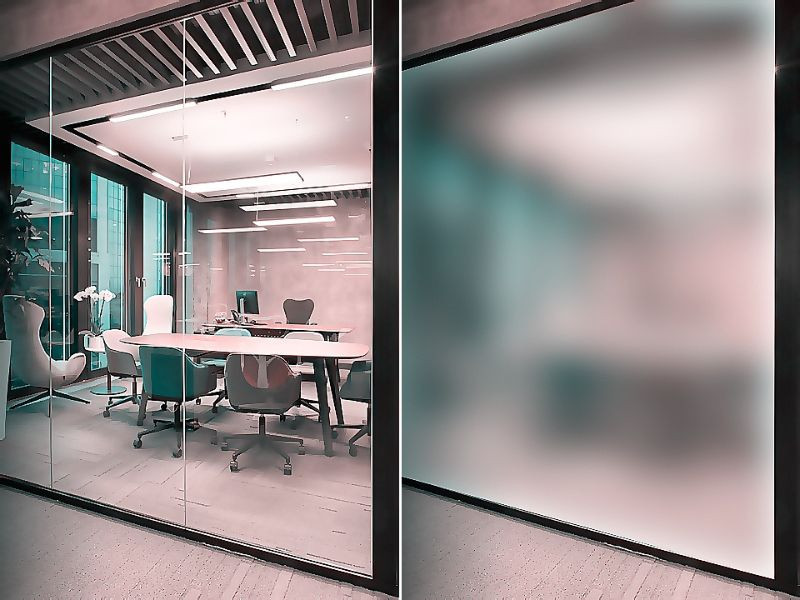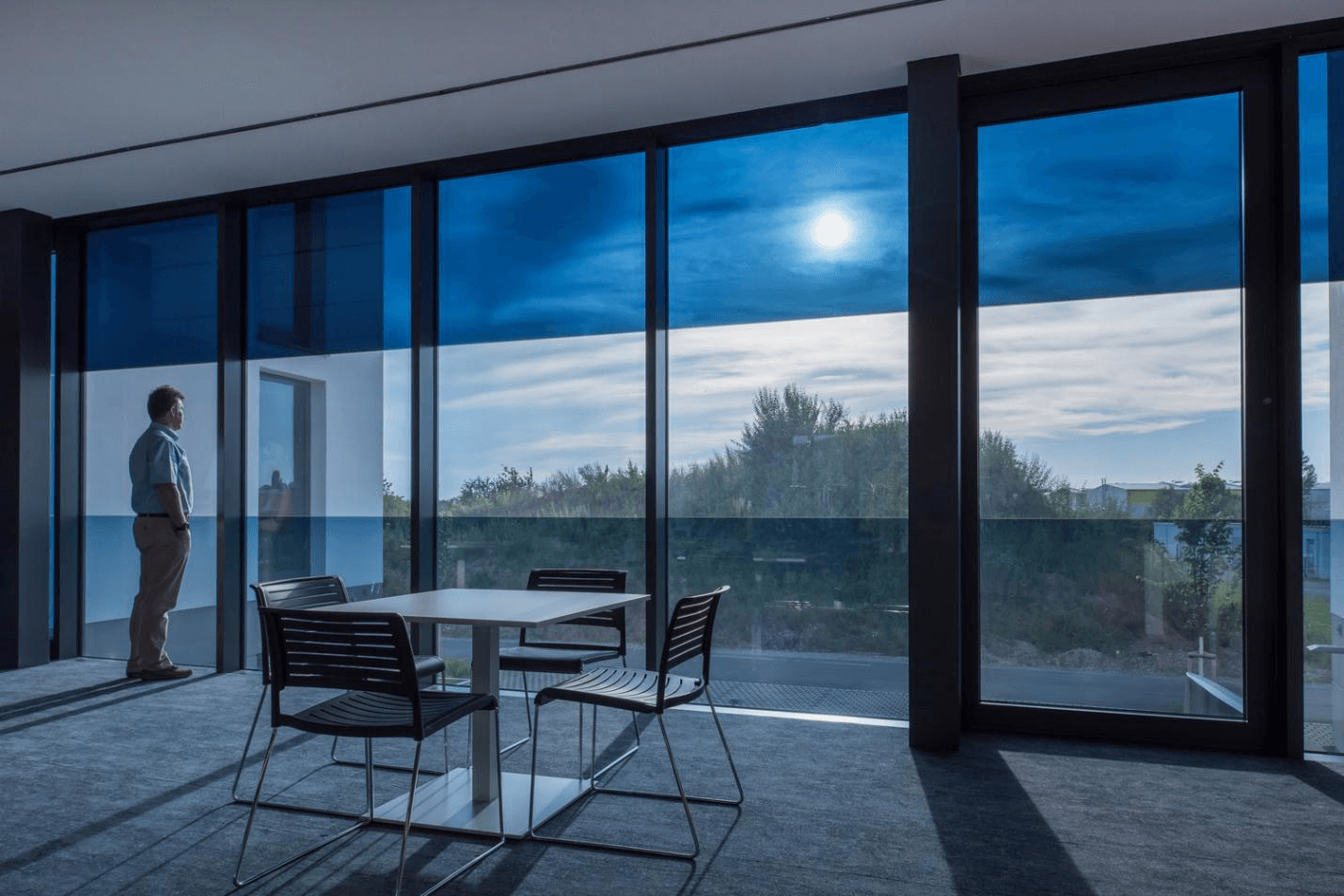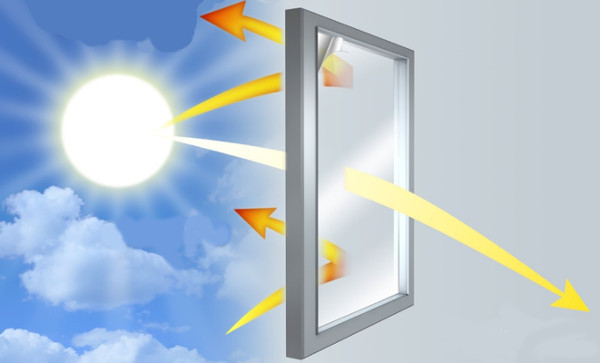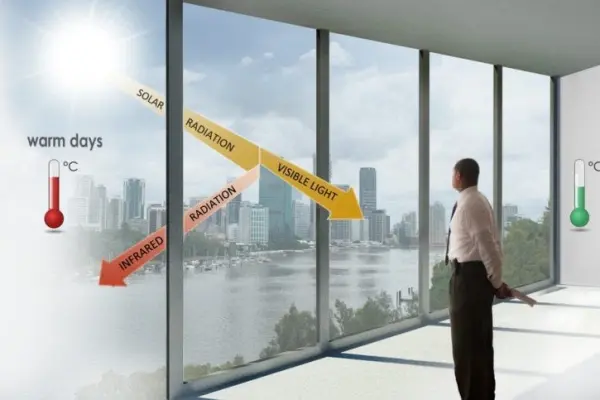The smart windows market is experiencing a boom in 2025. Electrochromic systems and smart glass have transformed from concept to reality. According to analysts, energy-efficient windows reduce heating costs by 10-15%, and the base system price starts from $300 per square meter. It should be noted that variable transparency windows are becoming the standard for premium housing and commercial real estate.
What drives developers to choose smart windows? Automatic dimming saves on air conditioning. UV protection preserves furniture and health. Integration with smart home systems simplifies microclimate control with a single touch.
"Installing electrochromic windows in our 500 m² office reduced air conditioning energy consumption by 30%. Employees noted the absence of glare and stable temperature throughout the day. Payback period was 3.5 years." - Mark Anderson, Development Director at EcoBuilding Solutions
Types of Smart Glass and Operating Principles
 Electrochromic windows are the flagship technology. The secret lies in microscopic layers of tungsten oxide applied between glass panes using magnetron sputtering. When a weak electric current (12-36 V) is applied, lithium ions or protons move between layers, changing the optical density of the material and providing smooth light transmission regulation from 5% to 70%. Switching time is 5-15 minutes depending on size and ambient temperature.
Electrochromic windows are the flagship technology. The secret lies in microscopic layers of tungsten oxide applied between glass panes using magnetron sputtering. When a weak electric current (12-36 V) is applied, lithium ions or protons move between layers, changing the optical density of the material and providing smooth light transmission regulation from 5% to 70%. Switching time is 5-15 minutes depending on size and ambient temperature.
PDLC film represents an alternative solution for liquid crystal windows. In practice with private clients, such systems demonstrate instant state transitions in 3-5 seconds. The principle is based on reorientation of liquid crystals under the influence of an electric field - when power is disconnected, crystals are arranged chaotically, creating a frosted effect. Power consumption is 3-7 W/m² only to maintain the transparent state.
SPD technology uses suspended particles in a liquid medium between glass panes. It is known that smart glass of this type provides precise transparency regulation from 1% to 70% with the ability to create intermediate states. Particles align under the influence of an electric field, changing light transmission. Does not require high power. But costs more than analogues.
Photochromic glass works autonomously - responds to ultraviolet radiation intensity without connecting to the electrical grid. Gasochromic systems change properties upon contact with hydrogen in a controlled environment, making them promising for specialized industrial applications.
Energy-Saving Properties of Technological Windows
 Energy-efficient windows demonstrate good performance under optimal conditions. In one of the recent projects in California, installing smart glazing units reduced building energy consumption by 12%. Thermal insulation of windows with low-E coating exceeds ordinary glazing units by 40-50%, which is particularly noticeable during transitional seasons with proper building orientation.
Energy-efficient windows demonstrate good performance under optimal conditions. In one of the recent projects in California, installing smart glazing units reduced building energy consumption by 12%. Thermal insulation of windows with low-E coating exceeds ordinary glazing units by 40-50%, which is particularly noticeable during transitional seasons with proper building orientation.
Silver oxide coating works as a selective filter. In winter, it reflects infrared radiation back into the room, preserving heat from heating devices. In summer, it blocks excess solar energy, reducing the load on climate control. Considering the design features of modern buildings, this technology allows saving 8-15% energy on HVAC systems under real operating conditions.
"Windows account for up to 40% of building heat loss. Properly selected intelligent windows reduce energy consumption for air conditioning by 10-18% depending on the climate zone and building type. This is a noticeable budget saving and carbon footprint reduction." - Energy Auditor Engineer Jessica Brown
The following table demonstrates the advantages of smart windows over traditional solutions by key operational characteristics.
| Characteristic | Regular Windows | Smart Windows | Advantage |
|---|---|---|---|
| Energy Loss | 40% of building heat | 25-32% of heat | 8-15% savings |
| Light Control | Curtains, blinds | Automatic | Convenience + aesthetics |
| UV Protection | Limited | Up to 99% | Health + furniture |
| Service Life | 15-20 years | 15-20 years | Equal durability |
| Smart Glass Price ($) | 100-200 | 300-600 | 7-12 year payback |
The comparison shows that initial costs for smart glazing units are compensated by long-term savings and increased operational comfort.
Integration with Smart Home Systems
Managing intelligent windows resembles orchestrating light and shadow. The smart home system allows creating complex operating scenarios: in the morning, windows gradually brighten, synchronizing with the alarm clock, during the day they automatically dim when exceeding the threshold illumination of 50,000 lux, in the evening they switch to privacy mode.
Solar energy becomes a managed resource, not a random factor. In practice, I often notice that properly configured automation reduces peak air conditioning loads by 12-18% depending on the climate zone. Light, temperature, and presence sensors form a unified building energy management ecosystem, but require professional configuration.
"At one of the facilities last season, we installed 50 smart glazing units with automatic control. The system independently responds to weather conditions and time of day. Residents note a significant increase in living comfort without additional effort." - Architect David Miller
Disadvantages and Limitations of Technological Windows
Smart glass has objective disadvantages. High cost remains the main barrier - installing smart windows costs 2-3 times more than traditional energy-efficient windows. Dependence on electricity creates vulnerability: when power is disconnected, electrochromic systems "freeze" in the last state, PDLC film becomes frosted.
Repair complexity is a serious problem. In practice with commercial facilities, I notice: when control electronics fail, complete glazing unit replacement is required. On-site repair is practically impossible. The cost of smart glazing units makes such breakdowns painful for the budget.
Switching speed of electrochromic systems is 5-15 minutes at normal temperature (+20°C) - this is slow for emergency dimming. Limited temperature range for effective operation (-10°C to +50°C) is critical in some climate zones. At negative temperatures, switching time increases by 2-3 times. Thus, the technology requires careful analysis of operating conditions.
Practical Guide: How to Choose Smart Windows
 Energy-efficient windows require a systematic approach to selection. Climate conditions of the region, window orientation by cardinal directions, insolation intensity, and available project budget should be considered. Wrong technology choice can negate all advantages.
Energy-efficient windows require a systematic approach to selection. Climate conditions of the region, window orientation by cardinal directions, insolation intensity, and available project budget should be considered. Wrong technology choice can negate all advantages.
Variable transparency window selection checklist:
- Building type: for offices - electrochromic technology, for residential - liquid crystal windows
- Budget: photochromic $150-250, PDLC $200-350, electrochromic $400-600 per m²
- Switching speed: PDLC 3-5 sec, SPD 30 sec, electrochromic 5-15 min
- Glass power consumption: photochromic 0 W, PDLC 3-7 W/m², electrochromic 8-12 W/m²
- Warranty: minimum 10 years on smart glass, 3-5 years on electronics
- Compatibility: check integration with KNX, Modbus, BACnet protocols
- Power supply: uninterruptible power source needed for critical zones
Variable transparency windows are most effective in buildings with large glazing area (more than 40% of facade). For small openings, the economic effect is minimal, better to use quality traditional energy-efficient windows.
Economic Efficiency and Payback
Smart glass installation pays off through energy savings and increased property value. On average, the investment return period is 7-12 years for commercial facilities and 10-15 years for private housing, considering all installation and maintenance costs. It is known that basic system prices in 2025 decreased by 20% due to production scaling.
Installing smart windows increases property value by 8-12% and reduces operating costs by 8-15% annually under optimal conditions. Triplex glass with smart coatings additionally provides security - when broken, fragments remain on the film, which is important for public buildings.
Manufacturer warranties extend to 10-15 years of glazing unit operation and 3-5 years on electronic components. Some companies offer service contracts for the entire operating period, including maintenance and component replacement, which is critical for reliable system operation.
Technology Development Prospects Through 2030
The future belongs to self-learning systems and nanotechnologies. New developments include AI algorithms that learn user preferences and optimize energy consumption without manual settings. Integration with Alexa and Google Assistant voice assistants makes control intuitively clear.
Research in nanomaterials promises revolutionary changes. Considering current development rates, by 2030 the appearance of self-cleaning intelligent windows with increased service life up to 30 years and energy consumption reduced by another 15-20% is expected.
"New graphene-based composite materials will allow creating innovative windows with electricity generation function. Climate control energy consumption could become negative - windows will produce more energy than they consume." - SmartGlass Tech Laboratory Researcher Anna Rodriguez
Intelligent windows have ceased to be future technology. Energy-efficient windows with automatic dimming create a new standard of comfort and energy efficiency. Smart glass pays off in 7-12 years and increases property value by 8-12%. Electrochromic systems are suitable for large projects with long-term perspective, PDLC film is a practical solution for modernizing existing buildings. The choice depends on specific needs, climate conditions, budget, and long-term project goals.

